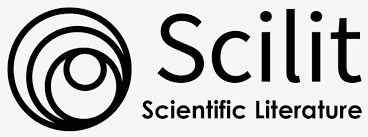Web Service untuk Integrasi Data Materi Pelajaran Sekolah Menengah Pertama (SMP) Secara Terdistribusi
DOI:
https://doi.org/10.14421/jiska.2018.32-07Abstract
The National Education Standards Agency's (BSNP) curriculum requires in principle the active participation of students in collecting information from various media, including one on the Internet. The role of schools, especially teachers, in providing sources of materials is also very necessary. The Internet is one of the means of information essential to the learning process. Therefore, setting up a digital hardware service network can be an effective learning tool. Digital hardware services can be mutually integrated between schools to obtain a variety of physical resources. The existence of a web service can integrate subject data into each school and can provide distributed information to many providers and service users according to the needs of each user. The Web service is different from a search engine system that does not provide the necessary data integration on hardware service systems that connect data between schools to be distributed to users according to their needs. The web service technology that is built is able to integrate the subject's service material and can be distributed to many users with different needs.References
Kemendikbud, 2012, Kerangka Dasar dan Struktur Kurikulum 2013, Kementerian Pendidikan dan Kebudayaan, Jakarta.
W3C Working Group. 2004. Web Services Architecture. http://www.w3.org, diakses 27 Februari 2019.
Ayuningtyas, A., Ashari, A., 2016. Pemanfaatan Teknologi Web Service Untuk Integrasi Sistem Layanan Materi Pelajaran Terdistribusi. Angkasa 8(1), pp. 33-46.
W3C Working Group. 2000. Simple Object Access Protocol (SOAP) 1.1. http://www.w3.org, diakses 27 Februari 2019.
Prazen, M. L., 2006, Web Service Testing, Web Service Fall.
Downloads
Published
How to Cite
Issue
Section
License
Authors who publish with this journal agree to the following terms as stated in http://creativecommons.org/licenses/by-nc/4.0
a. Authors retain copyright and grant the journal right of first publication with the work simultaneously licensed under a Creative Commons Attribution License that allows others to share the work with an acknowledgement of the work's authorship and initial publication in this journal.
b. Authors are able to enter into separate, additional contractual arrangements for the non-exclusive distribution of the journal's published version of the work (e.g., post it to an institutional repository or publish it in a book), with an acknowledgement of its initial publication in this journal.
c. Authors are permitted and encouraged to post their work online (e.g., in institutional repositories or on their website) prior to and during the submission process, as it can lead to productive exchanges, as well as earlier and greater citation of published work.









